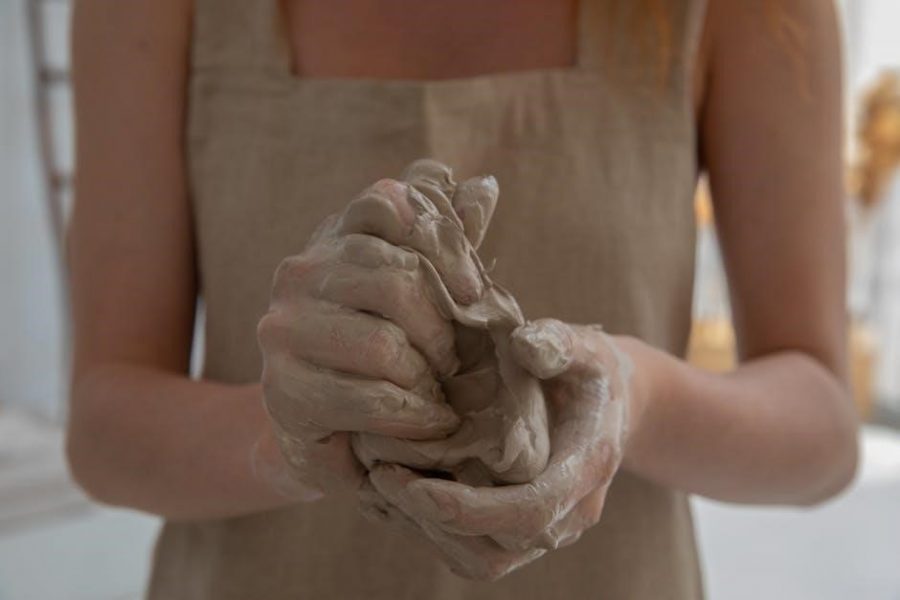Manual Lymph Drainage (MLD) certification is a specialized training program focused on the Vodder Technique, developed by Dr. Emil Vodder. This gentle, light-touch therapy enhances lymph flow, aiding in the reduction of swelling and inflammation. Certification equips professionals, such as massage therapists and healthcare providers, with the skills to treat conditions like lymphedema and post-surgical edema. Courses typically include theoretical and practical training, ensuring mastery of techniques that promote lymphatic health and improve patient outcomes.
1.1 What is Manual Lymph Drainage (MLD)?

Manual Lymph Drainage (MLD) is a gentle, non-invasive therapeutic technique designed to enhance the natural function of the lymphatic system. Developed by Dr. Emil Vodder, a Danish physician, MLD involves light, rhythmic manual strokes applied to the skin to stimulate lymph flow. This method works by gently stretching the walls of lymphatic vessels and encouraging the contraction of lymphatic valves, which helps to direct fluid through the lymphatic network.
The lymphatic system plays a crucial role in maintaining immune function, detoxification, and overall health by removing waste products, proteins, and excess fluids from tissues. MLD specifically targets the superficial lymphatic vessels, promoting the efficient drainage of lymph fluid into the deeper lymphatic system. When skillfully applied, MLD can significantly enhance lymph formation and circulation, reducing swelling and inflammation in affected areas.
MLD is characterized by its light, repetitive strokes, which are applied in a specific sequence to follow the natural pathways of lymphatic vessels. Unlike massage techniques that focus on muscles, MLD is designed to work directly on the lymphatic system, making it an effective treatment for conditions such as lymphedema, post-surgical swelling, and chronic inflammation. It is also used to support recovery after injuries, surgeries, or sports-related trauma.
One of the key benefits of MLD is its adaptability. It can be modified to suit various conditions and patient needs, making it a versatile tool for healthcare professionals. For instance, it is often combined with other therapies, such as compression bandaging or exercise, to maximize therapeutic outcomes; The technique is particularly valued for its ability to address both acute and chronic conditions, providing relief and improving overall well-being.
1.2 Importance of Certification in MLD
Certification in Manual Lymph Drainage (MLD) is essential for ensuring proficiency and competence in this specialized therapeutic technique. By obtaining certification, practitioners demonstrate their ability to apply the Vodder Technique effectively, which is crucial for achieving optimal therapeutic outcomes. MLD certification programs are designed to equip healthcare professionals, such as massage therapists and physical therapists, with the knowledge and skills needed to safely and effectively perform lymphatic drainage.
One of the primary reasons certification is important is that it ensures adherence to established standards. The Vodder Technique, developed by Dr. Emil Vodder, is a precise method that requires proper training to avoid causing harm or wasting time with ineffective techniques. Certification programs teach practitioners how to identify lymphatic pathways, apply appropriate pressure, and sequence techniques to maximize lymph flow. This expertise is particularly critical when working with clients who have lymphedema, post-surgical swelling, or other conditions requiring careful management.
Certification also enhances professional credibility. Patients seeking MLD therapy are more likely to trust certified practitioners, knowing that they have undergone rigorous training and passed assessments. Additionally, many certification programs are accredited by professional organizations, further validating the credentials of certified practitioners. This recognition can open doors to new career opportunities and increase earning potential.
Another key benefit of certification is the emphasis on evidence-based practice. MLD certification programs are grounded in scientific research, ensuring that practitioners understand the physiological principles behind lymphatic drainage. This foundation enables them to adapt techniques to meet the unique needs of each client, whether they are recovering from surgery, managing chronic inflammation, or seeking preventive care.
History and Development of MLD
Manual Lymph Drainage (MLD) was developed in the 1930s by Dr. Emil Vodder, a Danish physician, who pioneered the Vodder Technique. Initially used in France, this gentle, rhythmic method aimed to enhance lymph flow and reduce swelling. Over time, MLD evolved into a widely recognized therapy, with certification programs emerging to standardize its practice. Today, it remains a cornerstone of lymphatic care, continually refined through research and clinical application.

2.1 The Vodder Technique and Its Origins
The Vodder Technique, developed by Dr. Emil Vodder in the 1930s, is the foundation of Manual Lymph Drainage (MLD). A Danish physician, Vodder was inspired by his observations of the lymphatic system while working in France. He discovered that gentle, rhythmic manual manipulations could significantly enhance lymph flow and reduce swelling. This breakthrough led to the creation of a systematic approach to stimulating the lymphatic system, which he termed “lymphatic drainage.”
Vodder’s technique is characterized by light, precise strokes that mimic the natural contractions of lymphatic vessels. These movements are designed to redirect fluid away from congested areas, promoting drainage through healthier pathways. The method gained popularity in Europe and eventually worldwide, becoming a cornerstone of lymphatic therapy. Today, the Vodder Technique remains the gold standard for MLD, with certification programs emphasizing adherence to its original principles.

The origins of the Vodder Technique are deeply rooted in Vodder’s dedication to understanding the lymphatic system. His work laid the groundwork for modern applications of MLD, including its use in oncology, post-surgical recovery, and the management of lymphedema. The technique’s non-invasive nature and proven efficacy have made it a valued tool in the hands of certified practitioners worldwide.
Certification in the Vodder Technique ensures that practitioners are trained to apply these methods safely and effectively. Courses typically include both theoretical and practical components, with a focus on proper hand techniques, anatomical knowledge, and clinical applications. By mastering the Vodder Technique, professionals can offer patients a powerful, evidence-based approach to improving lymphatic health and overall well-being.

2.2 Evolution of MLD Certification Programs
Manual Lymph Drainage (MLD) certification programs have evolved significantly since their inception, reflecting advancements in lymphatic research and clinical applications. Initially, training in the Vodder Technique was limited to Europe, where Dr. Emil Vodder first introduced his methods. These early programs were often intensive, requiring direct mentorship from certified instructors and extensive hands-on practice. The exclusivity of these programs ensured a high standard of expertise among practitioners.
In the modern era, MLD certification has become more accessible and standardized. Many educational institutions and professional organizations now offer structured programs that combine theoretical knowledge with practical training. These courses are typically designed for licensed healthcare professionals, such as massage therapists, physical therapists, and medical practitioners. The curriculum often includes anatomy of the lymphatic system, physiology, and detailed techniques for various clinical scenarios.
One notable advancement is the integration of evidence-based practices into certification programs. Research has demonstrated the efficacy of MLD in managing lymphedema, post-surgical swelling, and other conditions, leading to the development of specialized modules within certifications. For example, some programs now offer advanced training in oncology-specific MLD or pediatric applications, catering to the diverse needs of practitioners.
The rise of hybrid and online learning platforms has further expanded access to MLD certification. While hands-on training remains essential, theoretical components are increasingly delivered through virtual classrooms, allowing greater flexibility for participants. This shift has made certification more attainable for professionals worldwide, fostering a global community of MLD practitioners.

Professional organizations, such as the Dr. Vodder Academy and the Academy of Lymphatic Studies, play a crucial role in maintaining the integrity of MLD certification programs. These bodies establish standardized curriculum guidelines and assessment criteria, ensuring consistency in the quality of training. Certification exams often include both written and practical components to verify a practitioner’s competence.
As the field continues to grow, there is an increasing emphasis on continuing education and advanced certifications. Practitioners are encouraged to stay updated with the latest research and techniques, ensuring that MLD remains a cutting-edge modality in lymphatic care. This evolution underscores the commitment of the MLD community to providing effective, evidence-based treatments for a wide range of lymphatic disorders.

Benefits and Applications of MLD Certification
Manual lymph drainage certification offers numerous benefits, including enhanced lymphatic function and improved circulation. It is widely applied in treating lymphedema, post-surgical swelling, and inflammation. MLD techniques are also used in oncology, post-trauma, and aesthetic therapies, making it a versatile tool for healthcare professionals. This certification enables practitioners to provide effective, evidence-based treatments, promoting patient recovery and overall well-being.
3.1 Therapeutic Benefits of MLD
Manual Lymph Drainage (MLD) offers a wide range of therapeutic benefits, making it a highly valued technique in healthcare and wellness. By gently stimulating the lymphatic system, MLD enhances lymph formation and promotes the drainage of lymph fluid, which can accumulate due to various medical conditions. This therapy is particularly effective in reducing swelling and inflammation, making it a cornerstone in the treatment of lymphedema, a condition characterized by chronic swelling in the arms, legs, or other areas. MLD also plays a crucial role in post-surgical recovery, helping to minimize edema and promote healing.
Beyond its application in lymphedema and post-surgical care, MLD is beneficial for a variety of other conditions. It is widely used to alleviate symptoms of chronic pain, fibromyalgia, and arthritis, as it helps to reduce inflammation and improve joint mobility. Additionally, MLD is known to enhance blood circulation, which can improve oxygen delivery to tissues and support overall cardiovascular health; This therapy is also recognized for its ability to stimulate the immune system, as the lymphatic system plays a key role in immune function.
MLD is particularly advantageous in oncology care, where it is used to manage lymphedema caused by cancer treatments such as surgery or radiation therapy. It is also beneficial for patients undergoing chemotherapy, as it can help to reduce swelling and improve overall comfort. Furthermore, MLD is a popular treatment in spas and wellness centers, where it is valued for its ability to promote detoxification, reduce stress, and enhance skin health. The gentle, non-invasive nature of MLD makes it suitable for a wide range of patients, including those with sensitive or compromised skin.
